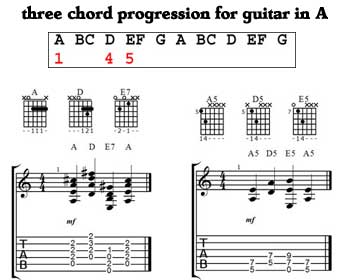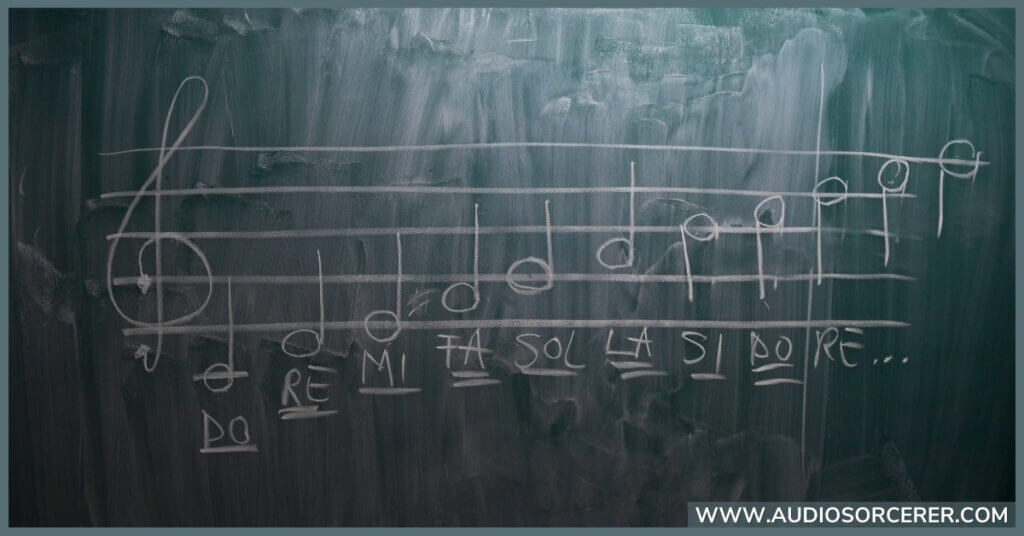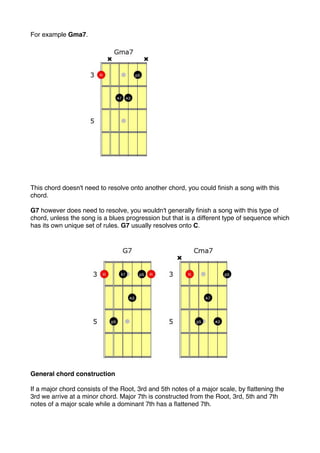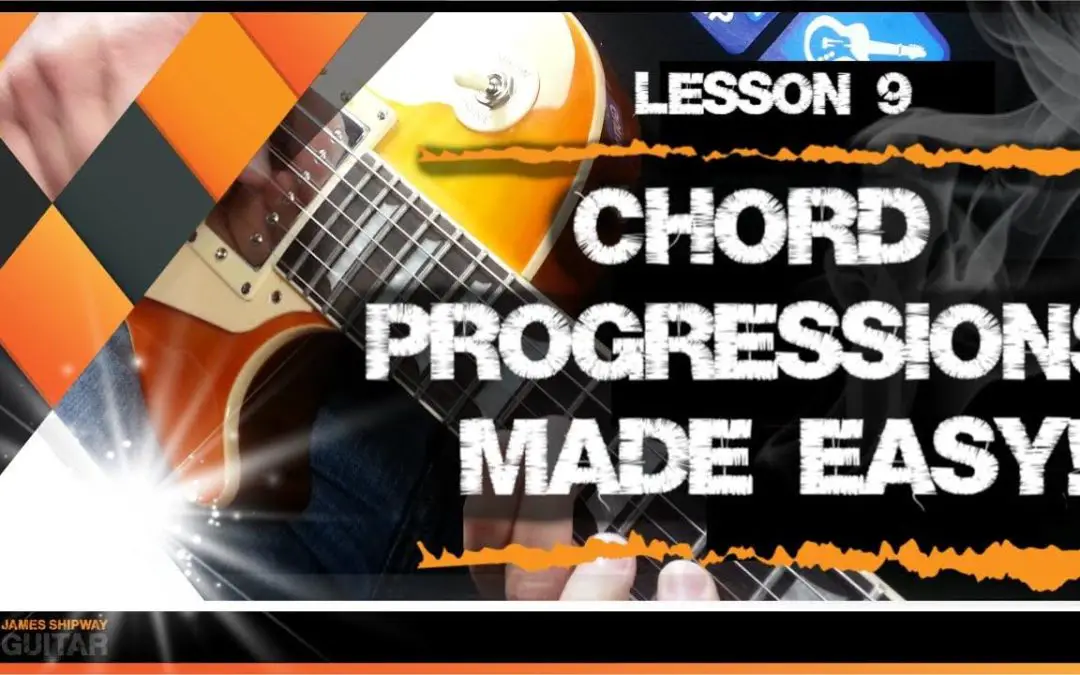Have you ever listened to a song and wondered, “How on earth did they come up with that harmonious guitar progression?” Well, fear not, aspiring musicians, for we are here to decode the secrets behind those magical chords that make you want to groove, strum, and air guitar like there’s no tomorrow. So grab your guitar, tune those strings, and get ready to unlock the mysteries of harmonious guitar progressions – because who needs a therapist when you have a guitar, am I right
Contents
- 1
- 2 Exploring Major and Minor Scale Progressions
- 3 The Role of Chord Extensions in Creating Harmony
- 4 Navigating Through Circle of Fifths for Smooth Transitions
- 5 Incorporating Secondary Dominants for Enhanced Musicality
- 6 Leveraging Modal Interchange for Unique Soundscapes
- 7 Practical Tips for Composing Your Own Harmonious Progressions
- 8 FAQs
- 9 Rock On!
theory-behind-guitar-progressions”>Understanding the Theory Behind Guitar Progressions
Ever wondered why certain guitar progressions sound so darn good? Well, let me break it down for you in a way that even your grandma could understand (okay, maybe not Grandma Edna, but you get the point).
First off, let’s talk about chords. Chords are like the building blocks of music. They’re like the ingredients in a recipe – mix ’em together just right, and you’ve got yourself a tasty musical dish. But if you throw in too much salt (looking at you, B# major), well, let’s just say it’s gonna leave a bad taste in your ear’s mouth.
Next up, we’ve got progressions. Think of progressions as the roadmap to your musical journey. They guide you from point A to point B, keeping you on track and preventing you from getting lost in a sea of musical chaos. Without progressions, you’d be like a lost puppy wandering around in a foggy forest of untuned strings.
Now, let’s talk about theory. Theory is like the secret sauce that ties everything together. It’s the why behind the what. It’s the magic behind the music. Understanding theory is like having x-ray vision into the soul of a song. It’s like being able to peek behind the musical curtain and see the wizard pulling all the strings (pun intended).

Exploring Major and Minor Scale Progressions
So you think you know all there is to know about major and minor scale progressions, huh? Well, think again! Strap in, because we’re about to take you on a wild ride through the wacky world of musical scales.
First things first, let’s talk about the major scale. This is the scale that most of us are familiar with, thanks to classics like “Do-Re-Mi” from The Sound of Music. It’s the go-to scale for happy, upbeat songs that make you want to dance like no one’s watching. Major scale progressions are like the musical equivalent of skipping through a field of daisies on a sunny day – they’re just that delightful!
Now, onto the minor scale. Ah, the minor scale – the misunderstood sibling of the major scale. While major scale progressions are all about sunshine and rainbows, minor scale progressions are more like dancing in the rain. They have a melancholic, moody vibe that adds depth and emotion to a song. Minor scale progressions are like the mysterious stranger at the party – you can’t take your eyes off them!
So, whether you’re grooving to a major scale progression or getting lost in a minor scale progression, just remember to have fun and let the music take you on a journey. Who knows, you might discover a whole new world of musical possibilities that you never knew existed!

The Role of Chord Extensions in Creating Harmony
When it comes to creating harmony in music, chord extensions play a crucial role in adding depth and complexity to a song. These extended notes go beyond the basic triads, giving a piece that extra oomph that makes it truly memorable.
One of the most common chord extensions is the seventh, which adds a jazzy flair to a progression. Picture yourself sipping a martini at a swanky lounge while a smooth jazz band plays in the background – that’s the power of the seventh chord in action.
But why stop at the seventh when you can go even further with ninth, eleventh, and thirteenth chords? These extensions create a rich tapestry of sound, taking your audience on a musical journey that they won’t soon forget. It’s like adding extra layers to a cake – sure, the basic recipe is delicious on its own, but why not throw in some sprinkles and frosting for good measure?
So next time you’re strumming away on your guitar or tickling the ivories on the piano, don’t be afraid to experiment with chord extensions. Get creative, have fun, and see where those extra notes take you. Who knows, you might just stumble upon a harmonic masterpiece that leaves your listeners begging for an encore.
So you’ve decided to take the scenic route and navigate through the mysterious Circle of Fifths? Buckle up and get ready for a wild ride filled with unexpected twists and turns!
First things first, familiarize yourself with the key signatures arranged in a circular fashion. Each key is connected to its relative major or minor, creating a seamless pathway for your musical journey. Think of it as a GPS for harmonious transitions!
When moving clockwise around the Circle of Fifths, remember the helpful mnemonic device: Father Charles Goes Down And Ends Battle. This will guide you through the sequence of fifths and help you effortlessly traverse from one key to the next.
As you navigate through this musical labyrinth, pay attention to the pattern of sharps or flats in each key. This will ensure that your transitions are smooth and melodious, without any unexpected detours or roadblocks. So go ahead, explore the Circle of Fifths and let your creativity soar!

Incorporating Secondary Dominants for Enhanced Musicality
So you want to spice up your music with some secondary dominants, huh? Well, get ready to take your audience on a harmonic rollercoaster ride they won’t soon forget!
One great way to incorporate secondary dominants is by using them to enhance a resolution. Instead of going from the tonic straight to the dominant, throw in a secondary dominant to really catch your listeners off guard. It’s like adding a little surprise twist to your musical journey!
Another fun trick is to use secondary dominants to modulate to a different key. This can create a sense of drama and excitement in your music, leaving your audience on the edge of their seats wondering where you’ll take them next. It’s like taking a musical road trip to uncharted territories!
And don’t forget to experiment with different types of secondary dominants – there’s the V/V, the V/vi, the V/iii…the list goes on! Mixing and matching these secondary dominants can add complexity and depth to your music, making it more interesting and engaging for your listeners. So go ahead, dive into the world of secondary dominants and watch your musicality soar to new heights!
Leveraging Modal Interchange for Unique Soundscapes
Modal interchange can be a powerful tool in your musical arsenal, allowing you to create unique and unexpected soundscapes that will surprise and delight your listeners. By borrowing chords from parallel modes, you can add a touch of whimsy and intrigue to your compositions.
Imagine starting off in a simple C major progression, then throwing in a D minor chord for a bit of unexpected melancholy. Your audience will perk up their ears and wonder what other surprises you have in store. Embrace the unexpected and watch as your music takes on a whole new level of depth and complexity.
Not sure where to start with modal interchange? Don’t worry, we’ve got you covered. Here are a few tips to get you started:
- Experiment with borrowing chords from the parallel major or minor key.
- Try incorporating chromatic mediants for a truly unexpected twist.
- Don’t be afraid to mix and match different modalities to create your own unique sound.
So go ahead, dive into the world of modal interchange and see where it takes you. Who knows, you might just stumble upon the next big musical trend!
Practical Tips for Composing Your Own Harmonious Progressions
So you want to compose your own harmonious progressions? Well, grab your pen and paper because I’ve got some practical tips for you!
First things first, let’s talk about chord progressions. Think of them as the building blocks of your piece. Start by choosing a key and then experiment with different combinations of chords within that key. Don’t be afraid to get creative and try out some unexpected progressions – breaking the rules can lead to some interesting results!
Next up, let’s talk about voicings. As the great jazz pianist Thelonious Monk once said, “Wrong is right.” Don’t be afraid to experiment with unconventional voicings and inversions – you never know what kind of unique sound you might stumble upon!
And finally, don’t forget about rhythm. A good progression is like a well-choreographed dance – each chord should flow seamlessly into the next. Mix up your rhythms and experiment with syncopation to keep things interesting. Remember, music is all about the groove!
FAQs
Why is it important to understand harmonious guitar progressions?
Oh, it’s just a minor detail that can make or break your guitar playing. No big deal! But seriously, understanding harmonious guitar progressions can take your playing to a whole new level. It helps you create beautiful melodies, express emotions through music, and impress your friends at jam sessions.
How can beginners start decoding harmonious guitar progressions?
Well, first things first, put down the air guitar and pick up the real deal. Next, familiarize yourself with basic music theory concepts like major and minor chords. Practice playing simple chord progressions and pay attention to how each chord complements the others. Soon enough, you’ll be decoding harmonious guitar progressions like a pro!
What role do scales play in creating harmonious guitar progressions?
Picture this: scales are like the ingredients in a recipe. Just like you wouldn’t want to add salt to a cake (trust me, I’ve tried), you wouldn’t want to play the wrong scale in a progression. By mastering different scales and understanding how they relate to each other, you can easily whip up a harmonious guitar progression that’ll have listeners begging for more.
Can experimenting with different chord voicings enhance harmonious guitar progressions?
Absolutely! Don’t be afraid to get creative with those fingers. Experiment with different chord shapes and voicings to add depth and complexity to your progressions. Who knows, you might stumble upon a magical combination that becomes your signature sound.
Any tips for making harmonious guitar progressions sound more interesting?
Well, if you’re tired of playing the same ol’ progressions, spice things up with some fancy embellishments. Add arpeggios, hammer-ons, pull-offs, and other techniques to your arsenal. Remember, variety is the spice of life (and guitar playing).
Rock On!
And there you have it – the secrets to unlocking harmonious guitar progressions are now in your hands. From understanding the basics of harmony to practicing different chord progressions, you are well on your way to becoming a guitar virtuoso.
So grab your guitar, tune those strings, and let the harmonious melodies flow. Whether you’re strumming along to your favorite song or composing your own masterpiece, remember to keep it harmonious and rock on!



